The Business of Yoga Wear: A Comprehensive Analysis from High-Quality Activewear Manufacturers!
 2024-03-30
2024-03-30

 Sansansun
Sansansun
Introduction
Innovatively, the yoga wear industry flourishes by combining fashion and function. New developments in weaves and styling redefine the consumer experience. The world yoga apparel autumn boom drives market growth. Brands compete for supremacy, using tech and eco-innovations. This survey unravels the intricate weave of the yoga wear industry, revealing its multi-layered nature and highlighting the role of high quality activewear manufacturers in this dynamic landscape.
The Evolution of Yoga Wear!
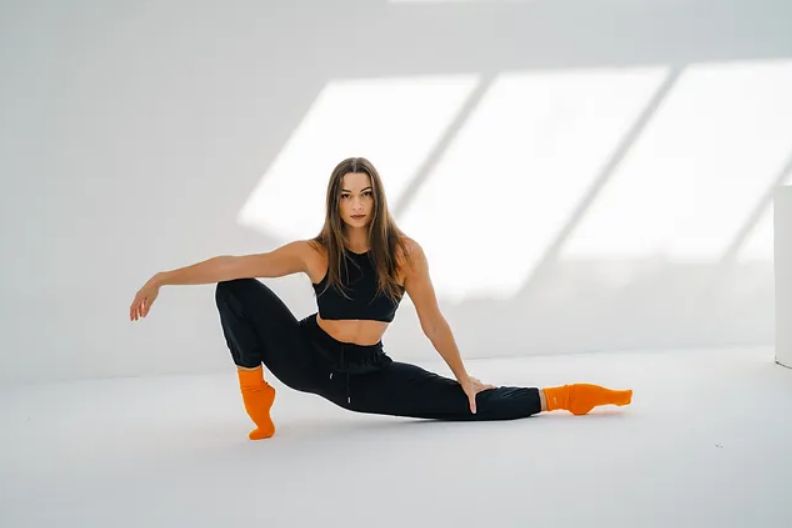
Yoga attire has evolved, blending function and fashion. Fabrics now integrate Spandex (LycraⓇ) and Polyester, enhancing flexibility. Nanotech in textiles regulates temperature, optimizing comfort.
Compression zones in leggings support muscles, reducing fatigue. Moisture-wicking technology keeps practitioners dry. Seamless designs prevent skin irritation. Advanced dyeing techniques ensure color longevity, resisting wash-related fading. Apparel now incorporates recycled materials, reflecting environmental consciousness. Eco-friendly practices in manufacturing reduce carbon footprint.
Reflective elements in fitness clothing enhance safety for outdoor yogis. Anti-odor treatments in fabrics maintain freshness. Modern yoga wears combines aesthetics with performance, elevating the practice experience.
The Rise of Athleisure and its Impact on Yoga Wear!
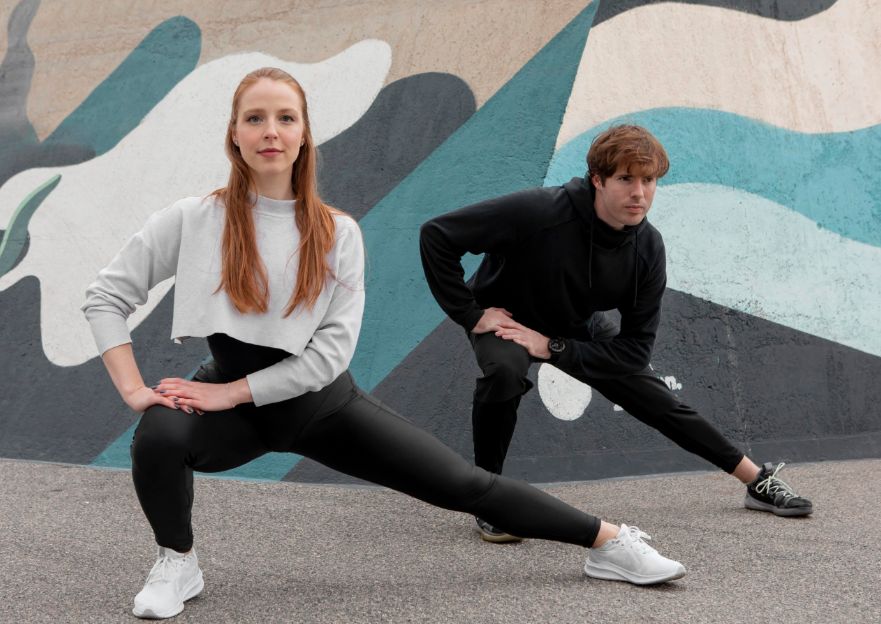
Fashion Fusion
Athleisure merges with yoga gear, introducing versatile designs. Key fabrics: SpandexⓇ, Bamboo, Cotton blend. Enhanced stretchability ensures freedom in poses.
Color schemes extend beyond traditional, embracing bold and pastel palettes. Dual-purpose outfits cater to studio and street style. Collaborations between fashion brands and yoga lines innovate trends. Athleisure's rise reshapes yoga wear, making it a lifestyle statement.
Comfort Priority
Yoga wear prioritizes comfort, employing soft, breathable materials. Seamless construction minimizes irritation. Elastic waistbands in leggings adjust for fit. Fabric technologies like CoolmaxⓇ manage perspiration. Outfits feature multi-layer options for varying climates. Comfort-driven design influences consumer preference, elevating yoga apparel standards. This focus ensures wearers maintain focus on practice, not discomfort.
Tech Integration
Tech integration in yoga attire includes smart fabrics. These materials monitor heart rate and muscle engagement. Wearable tech seamlessly blends with clothing, offering real-time feedback. UV protection is woven into fabrics, safeguarding outdoor practitioners.
Antimicrobial treatments keep garments hygienic. Such advancements enrich the yoga experience, merging wellness with innovation.
Market Expansion
Yoga wear's market expands globally, driven by health trends. Online platforms boost accessibility, reaching diverse demographics. Product ranges now cater to all body types, promoting inclusivity. Kids' yoga lines introduce early engagement with wellness.
Expansion is fueled by digital marketing, leveraging influencers and social media. This growth reflects a broader acceptance of yoga's benefits.
Style Diversification
The variety of style in yoga wear is shows individuality. From geometric to floral, prints are tailored for individual likings. Wraps and boleros make layering pieces that add versatility.
The rise in men’s yoga clothing diversifies the products. Maternity yoga attire benefits pregnant women. This form of yoga promotes self-expression during the practice, which can make it more enjoyable.
Consumer Demand
The evolution of yoga wear is driven by consumer demand. Preferences are biased towards environmentally friendly materials such as organic cotton. Size inclusivity becomes an important consideration ensuring practitioners are catered to.
Multi-functionals are in high impact running demand, as these pieces can be used on different activities. Individuals demand durability and often choose to buy quality, enduring clothes. This demand leads to continuous innovation in the yoga-wear industry.
Brand Influence
Brand influence is important in yoga wear. There are iconic brands that work with yoga experts by creating authentic lines. Limited edition releases create a feeling of thrill and privilege.
Brand storytelling matches with yoga’s principles as it responds to the consumers. Brands’ social responsibility initiatives, such as sustainability help in building brand loyalty among consumers. Important brands lead in setting market trends, adopting standards on quality and design.
Yoga Wear Market Size and Growth Projections!
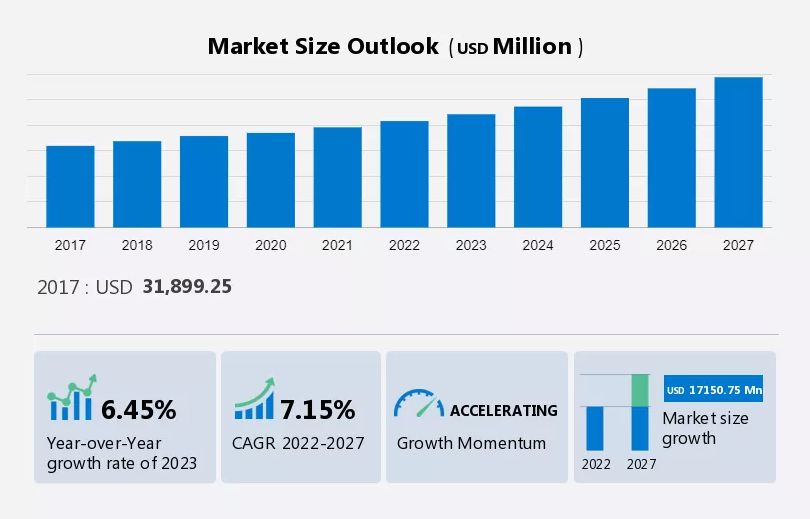
Revenue Trends
Yoga wear market sees revenue uptick. In 2021, sales hit $31B. Diverse product lines fuel growth. E-commerce platforms amplify reach, boosting sales. Premium brands command higher price points, elevating market value. Seasonal collections renew consumer interest. Limited editions create buzz, spiking revenue spikes. Revenue growth reflects yoga's rising popularity.
CAGR Insights
Projected CAGR stands at 9.5% through 2025. This growth outpaces general apparel. Innovations in fabric and design drive this surge. Expansion into new markets contributes to upward trend. Online retail's rise accelerates growth. CAGR reflects yoga wear's burgeoning sector within apparel.
Market Drivers
Health consciousness propels market. Yoga's global embrace widens consumer base. Social media influencers amplify trend visibility. Corporate wellness programs adopt yoga, increasing wear demand. Sustainability concerns sway consumer choices towards eco-friendly options. These drivers collectively push market expansion.
Regional Analysis
North America leads in consumption. Europe follows, with Asia-Pacific showing rapid growth. Cultural acceptance varies, influencing regional sales. Emerging economies present new opportunities. Market nuances reflect regional lifestyle and economic factors. Global brands adapt strategies per locale.
Demographic Shift
Younger demographics increasingly embrace yoga. Gender diversity in yoga practice grows. Aging populations adopt yoga for health, influencing wear design. Wearable tech integration appeals to tech-savvy segments. These shifts diversify consumer profiles, expanding market reach.
Product Diversity
Product range broadens beyond traditional wear. Tech-enhanced garments enter the fray. Size inclusivity becomes a norm. Eco-conscious products gain traction. Collaboration with fashion designers introduces high-end options. This diversity caters to varied consumer preferences.
Investment Surge
Venture capital flows into yoga wear startups. Tech integration in garments attracts investment. Brand acquisitions by major apparel companies signal market confidence. Investment in sustainable materials research grows. This financial influx fuels innovation and market expansion.
Key Players in the Yoga Wear Market!
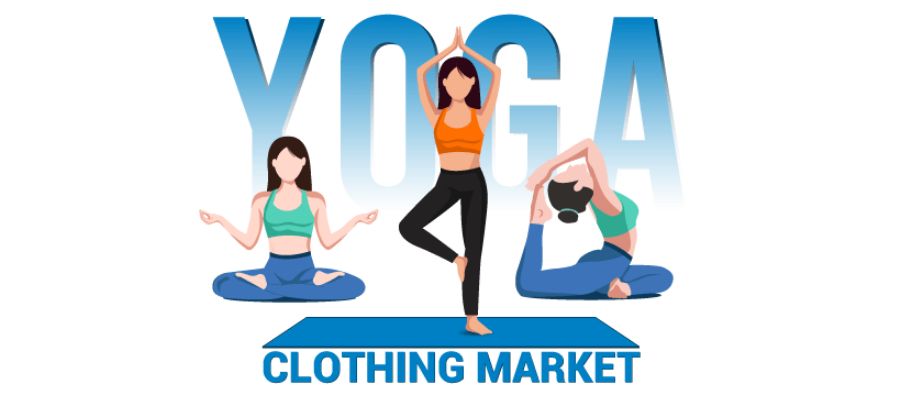
Brand Leaders
Lululemon, Nike, and Adidas top the charts in yoga wear. They innovate with fabric and fit. Each brand offers unique styles, catering to diverse yogis. High-quality materials define their offerings. These leaders set industry trends. Their marketing strategies boost brand visibility. They are synonymous with yoga lifestyle.
Market Share
Lululemon holds a significant share, followed by Nike and Adidas. Smaller brands carve niche segments. Online sales channels expand market reach. Limited editions and collaborations spike sales. Market share dynamics reflect competitive strategies and consumer preferences. Brand loyalty influences market positions.
Innovation Focus
Innovation drives these brands forward. Lululemon's seamless designs enhance comfort. Nike focuses on moisture-wicking fabrics. Adidas integrates recycled materials.
Tech wearables are the next frontier. These innovations respond to evolving yoga practices. They aim to enhance the yogic experience through technical advancements.
Strategic Alliances
Partnerships with yoga practitioners influence product development. Celebrity endorsements elevate brand appeal. Collaborations with fashion designers introduce stylish lines.
These alliances expand market presence. They blend yoga's essence with contemporary fashion. Strategic alliances bridge the gap between tradition and modernity in yoga wear.
Consumer Loyalty
Exceptional product quality fosters loyalty. Engaging community events strengthen brand-user connections. Customer service excellence retains consumers. Loyalty programs offer exclusive benefits. These elements cultivate a dedicated customer base. Consumer loyalty is pivotal for sustained brand success in a competitive landscape.
Product Range
Extensive ranges cater to all yogis. From eco-conscious to high-performance gear, choices abound. Men's and women's lines continue to evolve. Accessories complement the wearables. This diversity meets various consumer needs. Expanding product lines keep brands relevant and competitive.
Global Reach
Global distribution networks extend these brands' footprints. E-commerce facilitates international accessibility. Localized marketing strategies cater to regional preferences.
Global reach amplifies brand influence across continents. This international presence underscores yoga's universal appeal. Brands leverage global platforms to inspire a worldwide yoga community.
Consumer Behavior and Preferences in Yoga Wear!
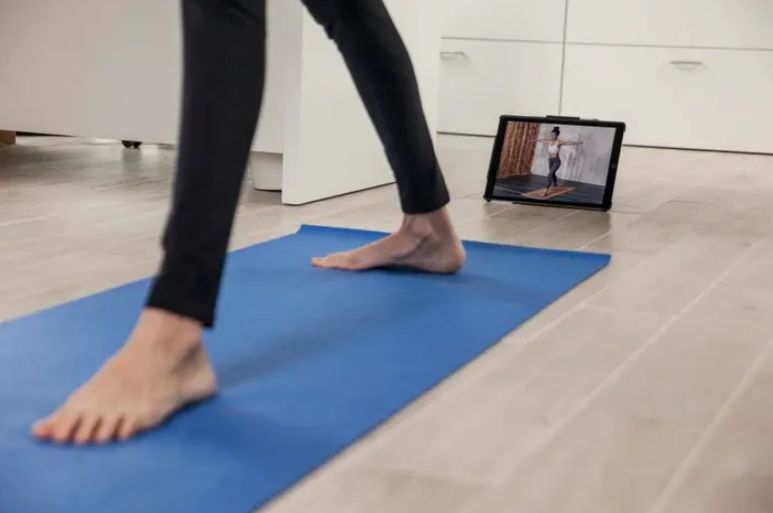
Quality Expectations
Yogis seek durable fabrics in wear. High elasticity and tear resistance are musts. Quality stitching prevents unraveling. Advanced moisture-wicking properties keep wearers dry. Material softness enhances comfort during poses. These expectations guide purchasing decisions. Consumers equate quality with longevity in yoga apparel.
Style Preferences
Design variety attracts yogis. Preferences span from minimalist to bold patterns. Layering options offer versatility. High-waist leggings remain popular for fit. Crop tops and loose-fitting tees blend style with function. Style choices reflect personal expression. Consumers favor attire that transitions from studio to street.
Price Sensitivity
Value for money guides purchases. Premium brands justify higher prices with quality. Mid-range options balance cost and durability. Sales and discounts attract budget-conscious buyers. Price sensitivity varies with consumer priorities. Quality often trumps price in final decisions.
Sustainable Choices
Eco-friendly materials gain traction. Organic cotton and recycled polyester are preferred. Sustainable production practices influence brand choice. Biodegradable packaging adds appeal. Consumers are willing to pay more for green options. Sustainability aligns with yoga's ethical principles.
Comfort Demand
Comfort is non-negotiable. Stretchability and breathability are key. Flat seams prevent chafing. Wide waistbands offer support without constriction. Fabric softness is crucial for skin sensitivity. Comfort drives repeat purchases. Consumers prioritize feel over aesthetic in yoga wear.
Online Shopping
E-commerce dominates shopping habits. Detailed size guides reduce return rates. Customer reviews inform choices. Easy return policies enhance confidence. Virtual try-on technology gains popularity. Online shopping offers convenience and variety. Digital platforms are the primary source for yoga wear.
Brand Perception
Brand reputation influences loyalty. Positive reviews and testimonials build trust. Celebrity endorsements elevate brand status. Ethical business practices enhance brand image. Quality consistency cements brand perception. Consumers associate brands with lifestyle aspirations. Strong brand perception commands a loyal customer base.
Geographical Market Insights!
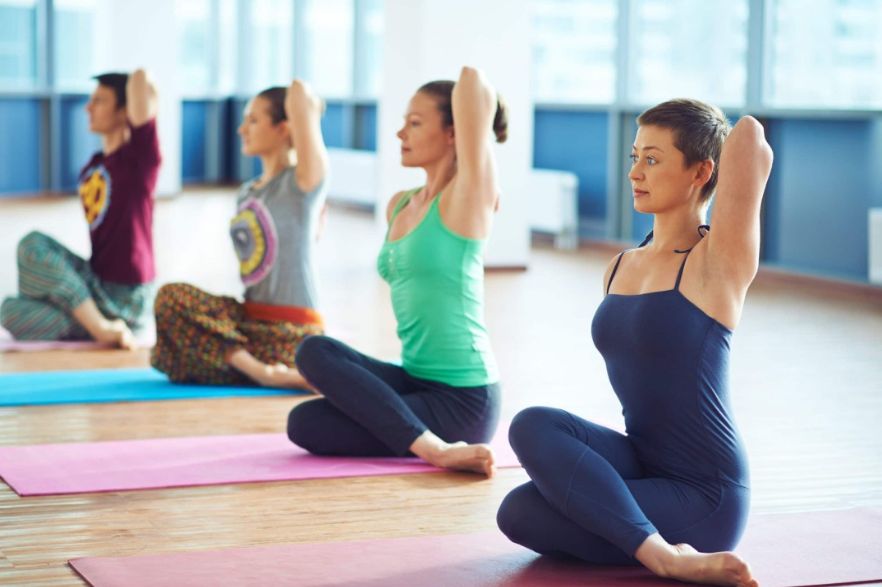
Regional Growth
North America leads, with Europe close behind. Asia-Pacific shows rapid expansion. Yoga's popularity fuels demand across these regions. Local brands emerge, challenging global leaders. Growth rates vary, reflecting regional economic conditions. This expansion showcases yoga's global appeal.
Market Potential
Market potential skyrockets in health-conscious societies. Urbanization increases accessibility to yoga studios. Online classes broaden reach, boosting wear demand. Potential remains untapped in developing regions. Market diversification strategies unlock new opportunities. Potential mirrors the growing wellness trend.
Emerging Markets
Latin America and Africa emerge as key markets. Rising middle-class populations drive growth. Local cultural adaptation influences product offerings. Infrastructure development supports market entry. Emerging markets present growth avenues with unique challenges. These regions are pivotal for future expansion.
Consumer Trends
Comfort and sustainability lead trends. Digital influence shapes purchasing habits. Social media drives awareness and brand preference. Wearable tech integration grows. These trends reflect evolving consumer priorities, guiding market strategies. Consumers' values increasingly dictate market dynamics.
Sales Channels
E-commerce dominates, followed by specialty stores. Omnichannel strategies enhance consumer engagement. Pop-up stores and yoga festivals serve as unique touchpoints. Direct-to-consumer models gain traction. Sales channels diversify to improve accessibility and convenience. Online platforms remain crucial for market penetration.
Product Preference
High-performance fabrics are preferred. Eco-friendly products gain market share. Design innovation meets diverse lifestyle needs. Consumers favor versatile pieces for various activities. Preference shifts towards personalized yoga wear. These preferences guide product development and marketing.
Cultural Influence
Cultural nuances shape product acceptance. Local traditions integrate into design elements. Global brands adapt to regional tastes. Cultural sensitivity becomes key in marketing. Yoga's heritage influences ethical and sustainable practices. Cultural influence enriches the global yoga wear landscape.
|
Criteria |
North America |
Europe |
Asia-Pacific |
Latin America |
Africa |
Middle East |
|
Regional Growth |
High |
Moderate |
Rapid |
Steady |
Slow |
Steady |
|
Market Potential |
Mature |
Mature |
High |
Emerging |
Emerging |
Emerging |
|
Emerging Markets |
- |
- |
India, China |
Brazil, Mexico |
Nigeria |
UAE, Saudi Arabia |
|
Consumer Trends |
Eco-conscious, Tech-savvy |
Eco-friendly, Style-conscious |
Price-sensitive, Quality-focused |
Health-focused, Value-oriented |
Tradition-driven, Accessibility-focused |
Luxury-preference, Brand-conscious |
|
Sales Channels |
Online, Retail |
Online, Retail |
E-commerce, Specialty stores |
Direct sales, Local shops |
Informal markets, Online |
Luxury outlets, E-commerce |
|
Product Preference |
High-performance, Versatile |
Sustainable, Fashionable |
Durable, Functional |
Comfortable, Affordable |
Practical, Cultural |
Premium, Branded |
|
Cultural Influence |
Minimal |
Moderate |
Strong |
Moderate |
Strong |
Moderate |
Table on Geographical Market Insights!
Challenges and Opportunities In Yoga Wear Industry!

Market Entry
Entering the yoga wear market demands strategic planning. High startup costs pose initial barriers. Brand differentiation is essential amidst established players. Market research guides product development. Niche targeting can carve out market space. Entry strategies must adapt to evolving consumer preferences. Successful entry requires innovation and brand storytelling.
Competitive Landscape
Intense competition characterizes the industry. Brand loyalty challenges new entrants. Price wars can erode margins. Collaboration offers competitive advantage. Differentiation through innovation is key. Competitive intelligence informs strategic decisions. Navigating this landscape demands agility and customer focus.
Innovation Need
Innovation drives market leadership. Sustainable materials are increasingly favored. Smart fabrics with tech integration offer new possibilities. Design innovation meets diverse consumer needs. R&D investment is crucial for staying ahead. Consumer feedback loops inform product evolution. Innovation sustains brand relevance in a dynamic market.
Economic Fluctuations
Economic downturns impact discretionary spending. Exchange rate volatility affects import costs. Diversified product pricing strategies can mitigate risks. Agile supply chains respond to economic shifts. Consumer confidence levels influence purchasing behavior. Economic resilience is built through strategic planning and market analysis.
Consumer Engagement
Engaging consumers is vital for brand loyalty. Social media platforms are key engagement channels. Personalized marketing enhances consumer connections. Community-building events foster brand communities. Feedback mechanisms ensure continuous improvement. Engagement strategies evolve with consumer behavior trends. Authenticity in engagement builds trust and loyalty.
Technology Adoption
Tech adoption is what makes brands distinct in the market. Wearable tech merges with yoga. E-commerce platforms enhance global reach. Data analytics optimize marketing strategies. Social media algorithms are aimed at targeting potential customers. Adoption of tech also whittles operational costs and improves upon consumer interactions. Growth requires continuous tech innovation.
Supply Chain
Supply chain efficiency is central to market performance. Ethical procurement addresses consumer values. Flexible supply chains respond to changes in demand. Local sourcing reduces environmental impact. The consumer trust is established through supply chain transparency. Effective logistics minimize cost and delivery times. Sustainable business practices are based on strong supply chains.
FAQs!
Q. What Drives The Yoga Wear Market Growth?
A. Growing global yoga popularity fuels market expansion. Health and wellness trends elevate demand. Technological fabric advancements enhance product appeal. Social media boosts yoga and related wear visibility. Eco-conscious consumer values drive sustainable product innovation. Diverse demographics adopting yoga widen the market. These factors collectively spur market growth.
Q. How Is Technology Influencing Yoga Wear?
A. Tech integration revolutionizes yoga apparel. Smart fabrics monitor performance, enhancing practice. Wearable technology syncs with health apps, providing feedback. Sustainable tech innovations produce eco-friendly materials. Online platforms facilitate global reach, boosting sales. Tech advancements in manufacturing improve product quality. Technology shapes future yoga wear trends.
Q. What Are Consumers Looking For In Yoga Apparel?
A. Consumers prioritize comfort, fit, and functionality. Eco-friendly materials attract sustainability-focused buyers. Versatile designs for studio-to-street wear gain popularity. High-quality, durable fabrics offer long-term value. Aesthetic appeal remains important for personal expression. Consumers seek innovative features like moisture-wicking and flexibility. These preferences guide product development.
Q. What Challenges Do New Entrants Face In The Yoga Wear Market?
A. New entrants navigate high competition and brand loyalty. Differentiating products in a saturated market is challenging. Establishing a supply chain poses initial hurdles. Meeting diverse consumer expectations requires broad product lines. Capital investment for quality and sustainability is significant. Strategic marketing is crucial to build brand recognition. These challenges demand careful planning and innovation.
Q. How Does Geography Affect Yoga Wear Trends?
A. Regional climates influence material and design choices. Cultural preferences shape style and color trends. Local market maturity affects consumer expectations and brand presence. Geographic-specific marketing strategies cater to regional tastes. Economic conditions in regions dictate price sensitivity.
Global fashion trends intersect with local customs, creating diverse yoga wear expressions. Geography plays a key role in shaping yoga apparel trends and strategies.
Conclusion
On the final note, yoga wear sector is a modern industry based on innovation and tradition that meets diverse consumer wants. Given that the market is dynamic, staying relevant is necessary. To keep up with the latest in yoga wear and equipment, log on to SANSANSPORTS. So that we can journey along side you as you dance into comfort and style during your pilgrimage of awareness through Yoga.

 Inquire(
Inquire(
 HOME
HOME Collaborating with Fitness Wear Manufacturers and Good Gym Clothing Brands!
Collaborating with Fitness Wear Manufacturers and Good Gym Clothing Brands!  You May Also Like
You May Also Like






















 Tel
Tel
 WhatsApp
WhatsApp
 Email
Email
 Address
Address






